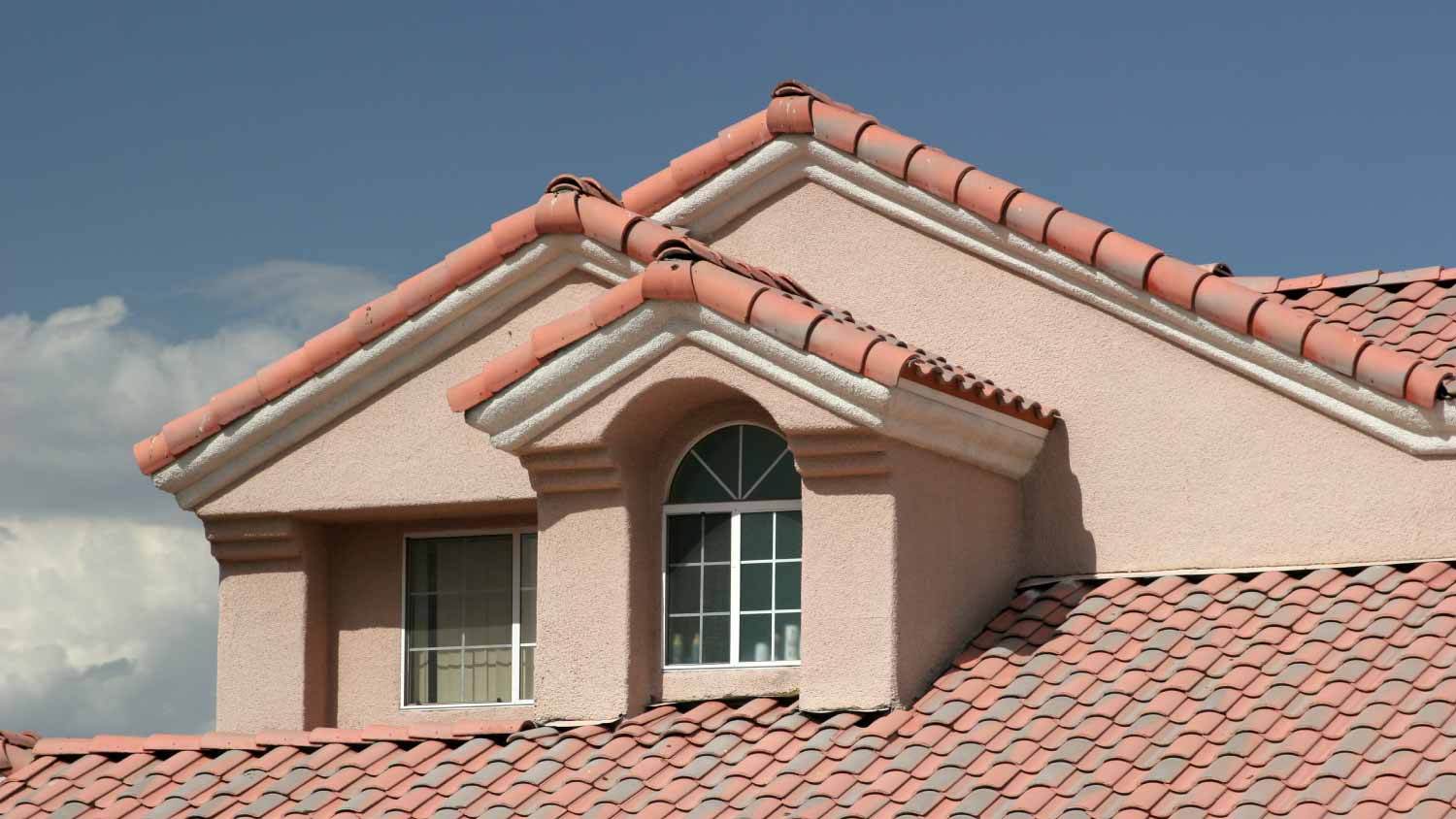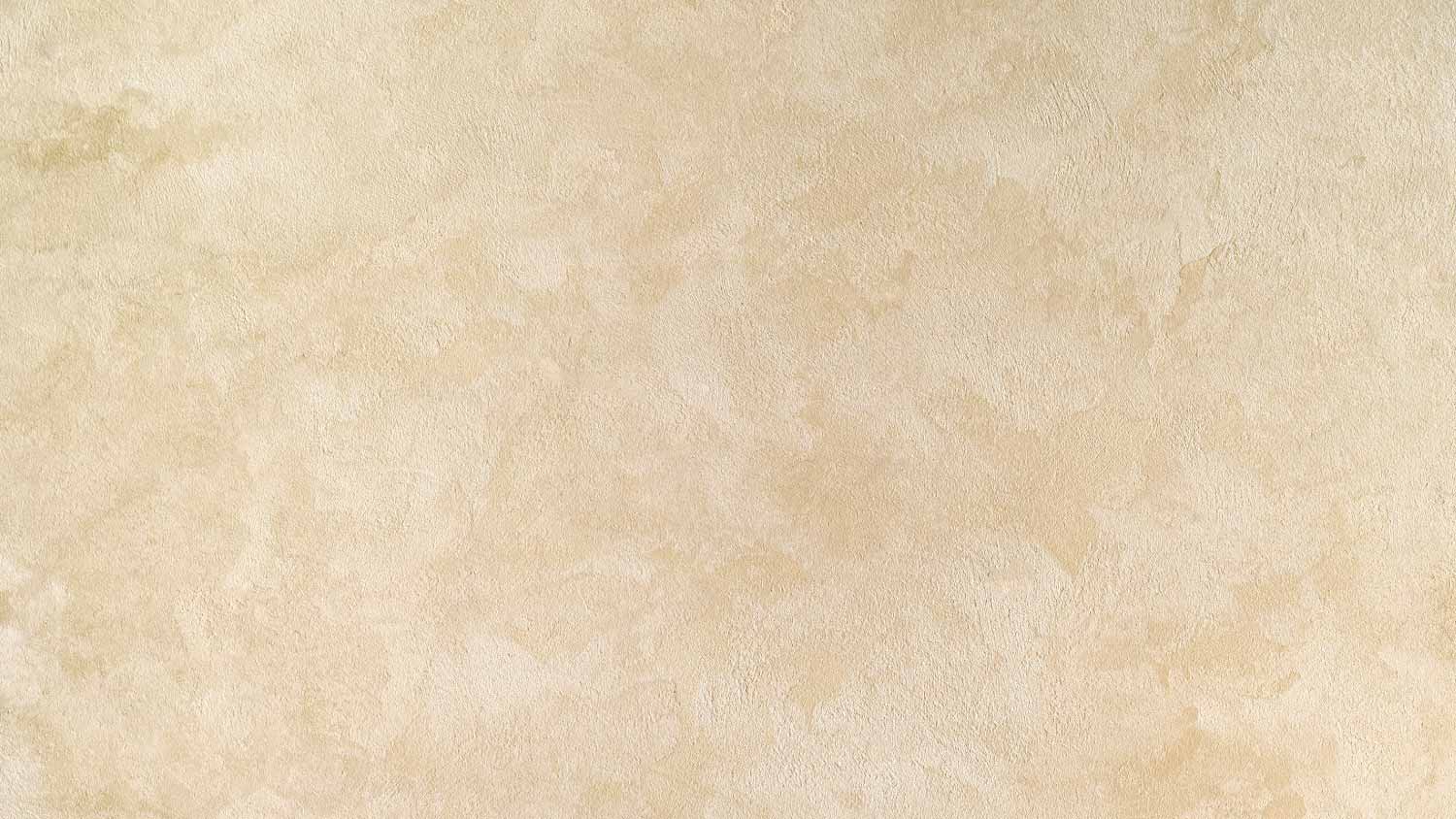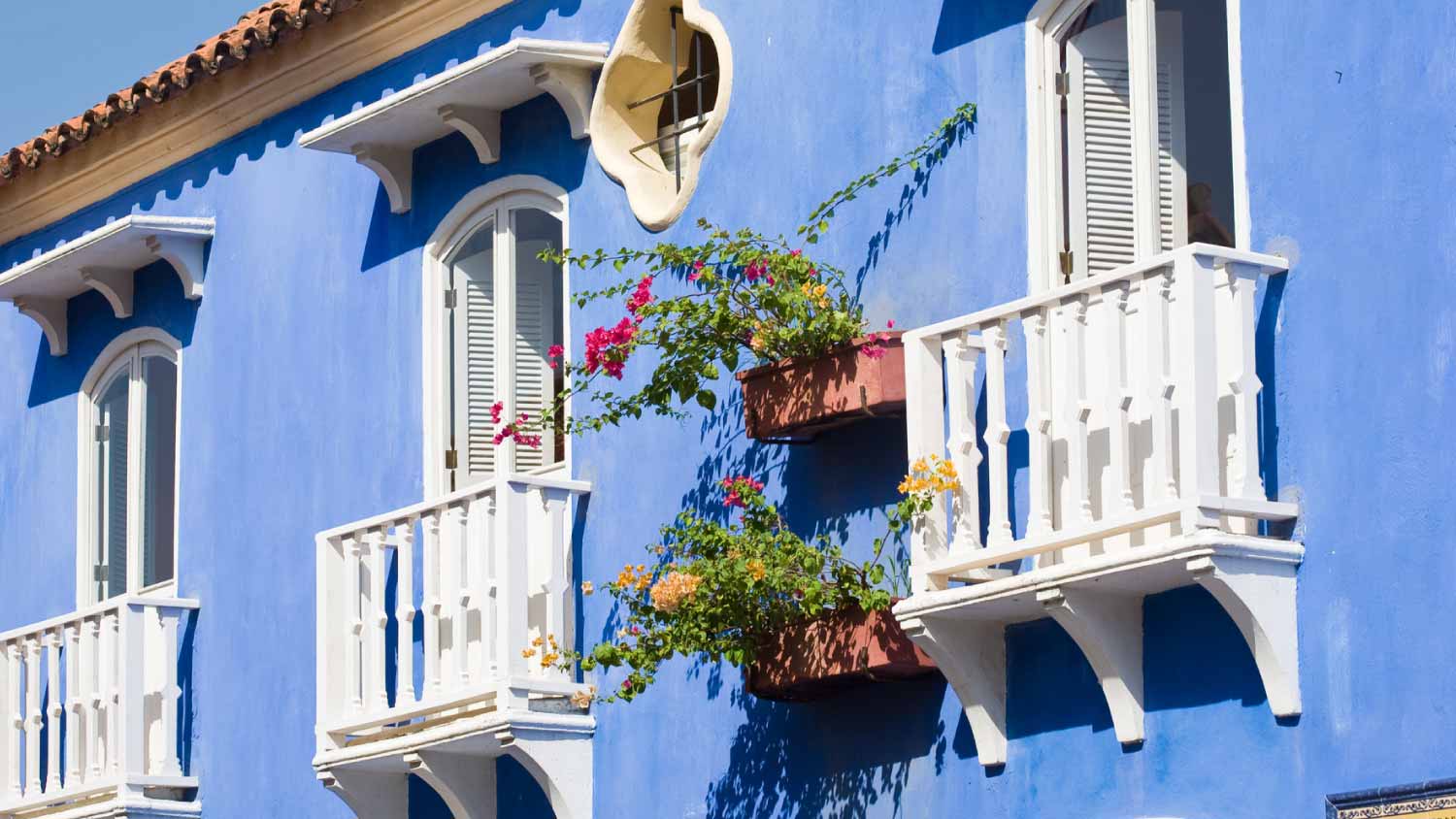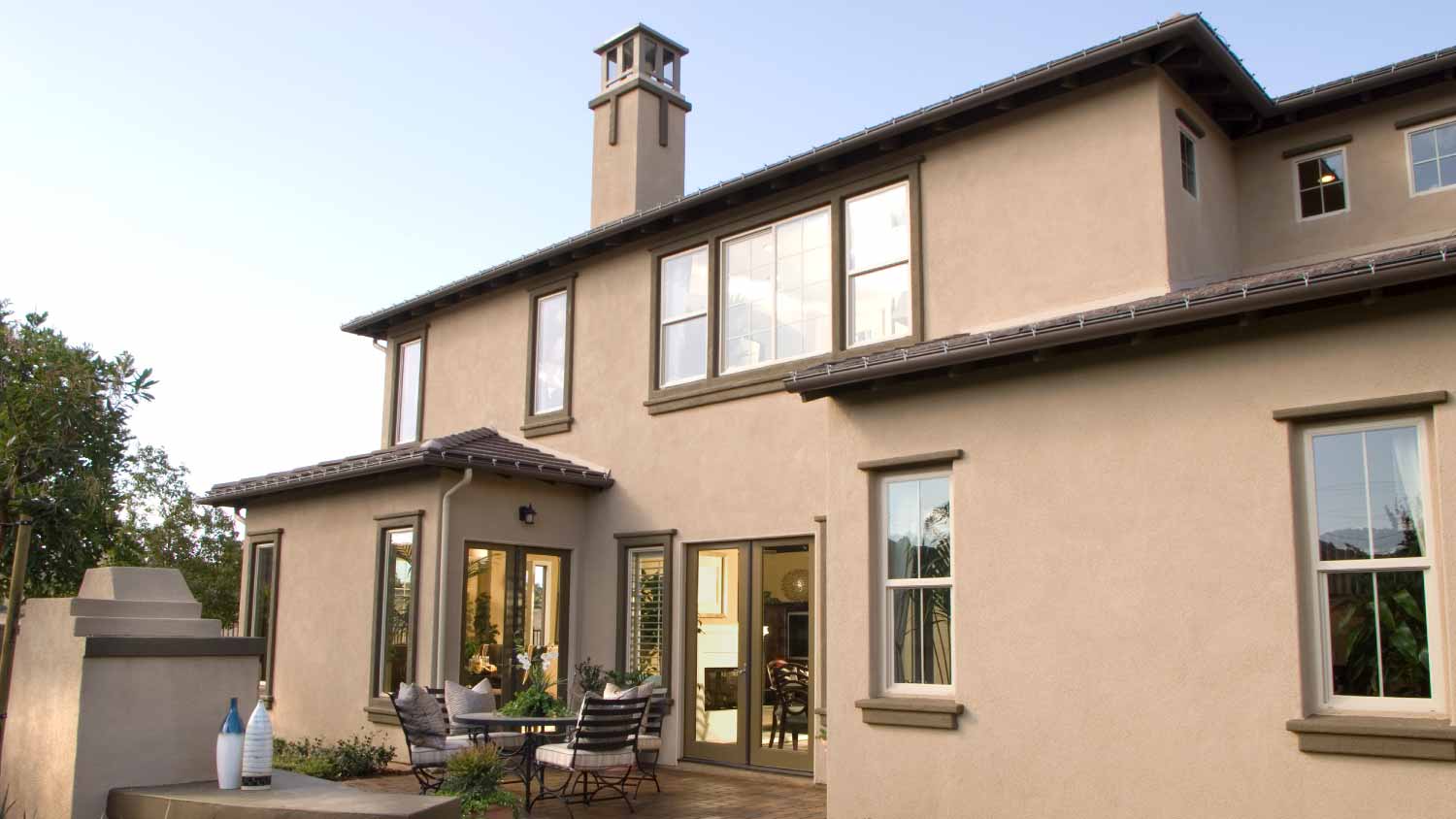
Discover the average stucco repair cost, key price factors, and ways to save. Get expert tips to budget your stucco repair project with confidence.
Find the perfect product to freshen up your home’s facade


Stucco is a popular option for building facades and interiors because it’s affordable, highly durable, and fire-resistant. There are five main types of stucco: traditional stucco, synthetic stucco (also known as EIFS), acrylic stucco, lime stucco, and colored stucco. Combined with different application systems and finishes, stucco can create long-lasting surface finishes, but it’s important to choose the right type for your climate and budget.
| Type | Cost (per Sq. Ft.) |
|---|---|
| Traditional stucco | $6–$9 |
| Synthetic stucco | $8.50–$12.50 |
| Acrylic stucco | $12–$27 |
| Lime stucco | $6–$9 |
| Colored stucco | $7–$11 |

Traditional stucco is made with sand, lime, water, and cement, which makes it a modern take on lime stucco that doesn’t include cement for increased durability. It’s much more affordable and easier to install compared to other types of stucco, but it’s more time-consuming to install than vinyl, wood, or fiber cement siding.
Traditional stucco costs between $6 and $9 per square foot, including materials and labor.
The major downside to traditional stucco is that it’s vulnerable to moisture and cracking, so it won’t last as long as synthetic or acrylic and will need maintenance more often
| Pros | Cons |
|---|---|
| Affordable | Prone to cracking |
| Easiest to install | More maintenance |
Best for: Homes in warm, dry climates
Synthetic stucco usually consists of six layers, including insulation board, fiberglass mesh, a water-resistant base coat, and an acrylic finish coat. For comparison, traditional stucco includes three layers, in most cases, and the added labor for synthetic is a big reason why the cost is much higher. Synthetic stucco costs between $8.50 and $12.50 per square foot.
When it comes to synthetic stucco vs. traditional stucco, synthetic is less likely to crack and offers superior insulation.
| Pros | Cons |
|---|---|
| Dries faster | More expensive |
| Superior insulation | Harder to install |
| Less prone to cracking | Absorbs moisture |
Best for: Homeowners looking to prioritize energy efficiency and siding longevity

Acrylic stucco is a type of synthetic stucco that includes acrylic resin for improved water resistance. The mixture is not completely waterproof, but it works better in wet climates than traditional and other types of synthetic stucco. Many brands also add in other chemicals to prevent mildew and mold growth for even better performance.
Acrylic stucco comes in many color options, so you often won’t need to pay extra for coloring during the application or painting afterward to customize. It also has a more even, smooth finish compared to traditional stucco. Acrylic stucco is the most expensive option, though, totaling between $12 and $27 per square foot.
| Pros | Cons |
|---|---|
| Most water-resistant | Most expensive |
| More color choices | Less natural-looking |
| Smooth finish | Availability |
Best for: Homeowners who want stucco but live in areas with frequent rainfall or high humidity
Lime stucco contains sand, lime, and water, but unlike traditional stucco, it contains no cement. This formula has gradually exited the mainstream construction market, but it’s still used for restoring historical buildings. Without the cement element, lime stucco has a higher fluidity and works better on buildings with potential settling.
However, since it is not a modern material, you should make sure to consult a stucco professional near you before using lime stucco on your home.
| Pros | Cons |
|---|---|
| More flexible | Uncommon |
| For historical homes | Least durable |
Best for: Restoring historical homes

Colored stucco is just a stucco product that contains a dye formulated specifically for stucco siding. The base can be traditional, synthetic, or acrylic stucco, and you will find a wide variety of pigments available to mix in.
If you know you want a particular color and don’t want to have to worry as much about fading colors, using colored stucco is the preferred method compared to painting the stucco because it lasts longer. Many homeowners choose to use colored stucco and then use paint for touch ups.
| Pros | Cons |
|---|---|
| Improves curb appeal | Difficult to apply |
| Less color fading | Expensive |
Best for: Boosting curb appeal and customizing the look of your home
In addition to the different types of stucco, there are two popular systems professionals use for stucco application nowadays.
The three-coat system is the most common option. It consists of a metal lath or wire mesh to improve adhesion, followed by a scratch coat, a brown coat, and then a finish coat. If you choose a custom color for your stucco, your pro will add it to the finish coat along with your desired stucco texture.
An EIFS stucco system is becoming increasingly popular, despite its higher up-front cost. It consists of six layers: a water-resistant barrier against the sheathing, a drainage plane, a board of insulation, a glass fiber mesh for adhesion, a base coat of stucco, and a finish coat of stucco. This is more time-consuming and costly to install, but it boosts your home’s energy efficiency and reduces the risk of mold and water damage to your siding.
The one-coat system is less common than the other two, but it’s more affordable since it only consists of one coat of stucco that a professional who does stucco installs over a mesh for good adhesion. It is simple, but it’s not as weather-resistant and durable as more complex options.
Once you decide on a type of stucco, you’ll want to consider the various stucco finishes available to you. Each creates a unique texture, and some have specific application requirements. Popular finishes include the following:
Lace and skip
Float or sand
Dash
English
Santa Barbara
Cat face
Smooth texture
Worm
Lace and skip is the most popular finish option for both commercial and residential projects. It is a semi-rough finish that your pro knocks down with a trowel. The resulting texture can easily hide any imperfections in the original stucco application. There’s lots of room for texture variation with this option.
A float or sand finishing is another common type of stucco finish, as it’s affordable and easy to repair without patches standing out. It creates a lightly textured surface and is one of the fastest and easiest finishes to use. Your pro will spray this finish on and then gently smooth with a trowel.
Your pro can apply a dash finish with a sprayer, too, making it another affordable option. You can also choose from low, medium, or heavy volumes to customize the texture. A dash finish can provide additional protection against cracking, and it’s relatively easy to repair.
English finishes create a pattern of large bumps and valleys that look like fish scales on your wall. This finish is more common on older buildings since it has a traditional appearance. It’s a bit pricey, as your pro will need to apply by hand, and hiding patches during repair work can be a challenge.
A Santa Barbara finish is one of the most challenging, time-consuming, and expensive finishes to apply because it’s a super-smooth texture. Repairs and patches can stand out, so repair work is also costly and time-consuming. If you want a modern look, though, this could be the way to go.
Smooth texture is similar to Santa Barbara but uses larger aggregate, which makes application and repairs a touch easier. This also provides a modern appearance, but it comes at a higher cost than high-texture options.
Cat face finish gets its name because its smooth areas and rough patches look like cat faces laid next to each other. This finish is one of the more unique options, especially given the customizability in the size and spacing of the rough patches. However, the smooth texture between them makes for an expensive application and challenging repairs.
While worm finish creates extremely bold textures, it is very difficult to repair and is less common than other options as a result. To achieve this finish, your pro will add aggregated stucco to the surface and swipe the material across with a trowel to create custom grooves.
Choosing the right type of stucco comes down mostly to the climate in your area, but you should also consider your budget for the installation and ongoing maintenance.
Traditional stucco is the most affordable option, but it’s only ideal in relatively dry climates. Synthetic stucco stands up better to moisture, and acrylic stucco is the best suited for areas that see regular rainfall. Lime stucco costs the same as traditional, but it’s even less resistant to water and is really only applicable on historical homes.
Stucco finishes will have a minor impact on up-front costs but can significantly affect repair and maintenance costs. Textured finishes like lace/skip, float/sand, and dash will help keep repair costs down, while smooth, Santa Barbara, and cat face finishes are more costly to repair.
From average costs to expert advice, get all the answers you need to get your job done.

Discover the average stucco repair cost, key price factors, and ways to save. Get expert tips to budget your stucco repair project with confidence.

Get transparent stucco inspection cost info. Learn what impacts price, how to save, and what to expect before hiring a pro for your stucco inspection.

Discover the cost to stucco a house in 2025, including average prices, key factors, and tips to help you budget and plan your stucco project with confidence.

Choose the right pro for stucco installation to get the best professional-quality results. Learn who does stucco installation and the benefits of hiring a pro.

If you're wondering who to hire to install or repair stucco, this guide to the best questions to ask a stucco contractor will help you find the right pro.

Traditional stucco and synthetic stucco are two excellent options for your home. Both materials can last 50 years or more, and can provide excellent protection for your home against the elements.